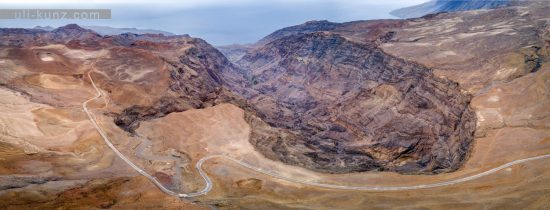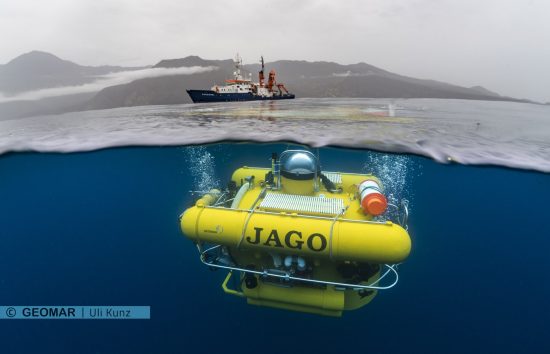









The Big Blue! Finally!
After three days of travelling via plane, a short delay of one day due to carnival, and a long taxi ride along winding gravel roads, we hopped into a leaking fishing boat and minutes later jumped into the clear (and really blue) water.
We, two Submaris team members Uli Kunz and Philipp Schubert, went to Cabo Verde on an assignment for the German research institute GEOMAR Hemholtz Center of Ocean Research to film and photograph JAGO, the only manned research submersible in Germany. JAGO was deployed from POSEIDON, a German research vessel based in Kiel.
When we reached our destination, Tarrafal on Santo Antao, we joined the cruise POS520 which was investigating the pelagic deep sea, the water column below
200m off the archipelago of Cabo Verde.
The islands of Cabo Verde provide the ideal location for deep water work since the waters around the volcanic islands have steep drop offs where deep sea can be reached not far from the island. The high island mountains also provide shelter and relatively calm conditions for instrument deployment. Here, the scientists used a combination of in-situ observations (with JAGO and the towed camera system PELAGIOS) and net tows to investigate the deep ecosystem of the open ocean.
Our job was to produce nice pictures of JAGO in clear, blue waters. We did this by freediving, as the diving infrastructure in Tarrafal is very limited (although there is a dive school there) and because it allowed us to move more freely and react quickly.
A highlight was the night dive with JAGO! The once empty waters near the surface were suddenly filled with life: salps, jellies, amphipods, even pelagic nudibranchs, not forgetting the mobula rays and dolphin fish hunting ferociously among all the teeming life.
What we witnessed there was the biggest migration in the world: every night, billions of animals ascend to the surface from deeper waters in the open ocean to hunt and feed, and we were right in the middle of it!
Images of JAGO descending ever deeper into the black seas below, where we could not follow, are really burned into our memories...
On the way back to the shore in the middle of the night, with our totally unlit fishing boat, the stars were spectacular, but there was something even more intriguing: the waters below glowed brighter than the stars above. From the North Sea we were already familiar with bioluminescence, but these bright spots within an ocean of blackness, often visible down to a depth of 10-15 meters, came not from tiny plankton, but rather from salps and cephalopods, something totally different!
Scientifically, the cruise was a success: the researchers found many new species and were surprised at how similar the pelagic zone in the subtropical Atlantic is to the well studied system off the coast of northern California. The ability to see the animals with their own eyes, made possible only by a manned submersible like JAGO, was an indispensable extension of the scientists toolbox.
 Submaris
Submaris 10th April 2018
10th April 2018 Unnamed Road, Kap Verde
Unnamed Road, Kap Verde